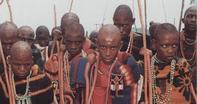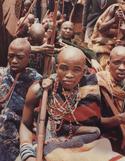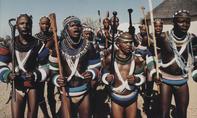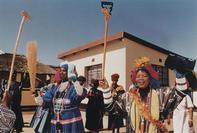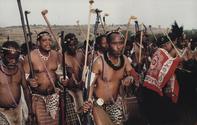
The Use of Carved Sticks
Arts and Crafts in Rural South Africa
Among the Tswana, and elsewhere in South Africa, male initiates receive one or more carved sticks in recognition of their transition to manhood. Initiates often embellish their sticks and many also add empowering medicines to them.
Some communities require initiates to carve their own sticks while recovering from the ordeal of circumcision. In others, such as the South Sotho, sticks are cut and left to dry and harden before being used.
To this day, staffs are sometimes surmounted by figurative details, but because they are often used in stick fighting competitions, most end in variously sized knobs. While many of these knobs are beautifully decorated, as in the past others are fashioned from the gnarled roots of trees.
The sticks initiates carry are in some cases purchased from curio shops and other commercial outlets. Recent efforts to revive the art of stick fighting has led to the development of sticks made from fibre rods that are strong enough to absorb sustained impact, but soft enough to cushion the human skin from breaking.
Sticks are also associated with wedding and other ceremonies. At one Baköpa wedding, the presents given to the bridegroom's family included an unusual walking stick topped by the handle of a saw.
Men participating in Zulu wedding ceremonies commonly carry sticks while singing and dancing. Although newly fashioned, the styles of some of these sticks are virtually identical to examples dating back to the 19th century.
By Professor Sandra Klopper

